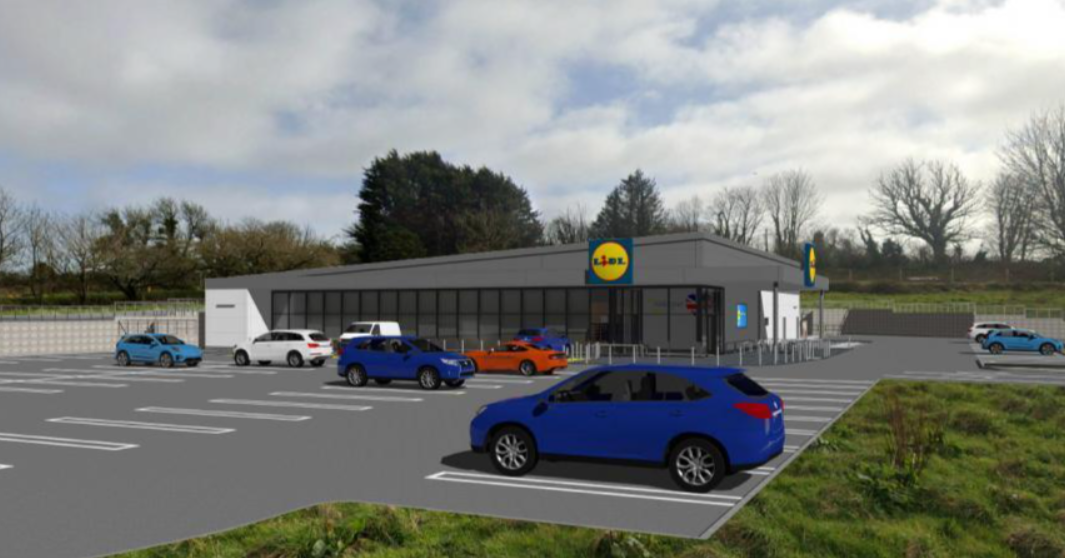Business
Why experts think Trump’s win will be blow to UK economy and your wallet

DONALD TRUMP’S return to the US presidency casts an uncertain shadow over the UK, potentially leading to economic shocks that could burden British households with higher costs, lower growth, and less job security. His policy unpredictability and “America First” doctrine spell challenges for UK businesses, while his strong-willed approach to trade and foreign policy could drive a wedge between the two countries.
TRADE TENSIONS COULD COST UK EXPORTERS
Trump’s protectionist stance has reignited concerns about tariffs, which could cut deep into the UK economy. The US is Britain’s largest export market, receiving around 25% of all UK-manufactured exports. Proposed tariffs of up to 10% on imports to the US would affect major British exporters such as Rolls Royce and BAE Systems, impacting an estimated £56 billion in trade. If enacted, such tariffs could push costs higher, threatening thousands of jobs in sectors dependent on American demand.
A STRAINED UK-US RELATIONSHIP
While Prime Minister Keir Starmer and Foreign Secretary David Lammy have made diplomatic overtures to Trump, attending dinners and working closely with Trump’s allies, challenges in the relationship remain evident. Starmer’s reserved style contrasts with Trump’s brash manner, raising questions about how compatible their leadership styles are. This uncertainty, highlighted by one diplomat’s remark that Trump “doesn’t give a stuff” about UK relations, suggests a bumpy road ahead.
Diplomats have tirelessly built relationships with Trump’s inner circle, including former Secretary of State Mike Pompeo and Trump’s likely national security adviser, Elbridge Colby. However, Trump’s mercurial nature, marked by unpredictable social media outbursts and contentious negotiations, may test these connections. As Lammy put it, relations with Trump are likely to be “bumpy, noisy, and transactional.”
ECONOMIC FALLOUT AND SLOWER GROWTH
The potential for UK economic slowdown under Trump’s policies is profound. Economists from the National Institute of Economic and Social Research (NIESR) predict UK growth will be halved if Trump enforces his proposed tariffs. Without tariffs, the UK could expect moderate growth of around 1.2% next year; however, this figure could drop as low as 0.4% should the trade restrictions come into force. Coupled with rising inflation, this could lead to diminished purchasing power for households already grappling with a cost-of-living crisis.
CURRENCY VOLATILITY AND JOB THREATS
Trump’s victory has already weakened the pound, with the GBP/USD exchange rate falling sharply as results came in. Investors are wary of increased tariffs and Trump’s isolationist policies, both of which could stoke currency volatility and strain the UK economy. A weakened pound also drives up the cost of imports, which affects consumers directly through higher prices for everyday goods.
The potential loss of thousands of jobs in sectors heavily reliant on US trade adds to the bleak outlook. Automotive manufacturing, for instance, could be heavily impacted by Trump’s threat of a 100% tariff on imported cars. Companies like Jaguar Land Rover, whose Land Rover Defender was one of the UK’s top exports to the US, may face cutbacks if tariffs make exports uncompetitive.
UNCERTAIN INVESTMENT ENVIRONMENT
The UK’s global-facing stock market may also suffer. Companies in the FTSE 100 and FTSE 250, which derive significant profits from international operations, could experience volatility as Trump’s policies introduce uncertainty into transatlantic trade. Such uncertainty could lead investors to shy away from the UK market, diminishing capital inflows and further affecting economic growth.
SHIFTS IN GLOBAL PRIORITIES
Beyond economic pressures, Trump’s foreign policy outlook could exacerbate the UK’s security challenges. Trump’s “America First” rhetoric and emphasis on Asia over Europe may leave European allies, including the UK, less confident about US support for initiatives like defending Ukraine. While the UK has publicly aligned with Trump’s view that Europe should shoulder more of its defense costs, there are fears that a US pivot to Asia could weaken the cohesion of NATO and reduce military backing for Europe.
Lammy has attempted to foster an understanding of Trump’s instincts, acknowledging his focus on American interests and recognition of Asia’s growing influence. However, as the UK looks toward cooperation on issues like Ukraine, this alignment may prove insufficient in securing the support needed to address shared security concerns.
BRITISH FAMILIES TO SHOULDER THE COST
For British families, the impact of a Trump presidency could hit close to home. With increased tariffs potentially driving up inflation by 3-4%, the Bank of England may feel compelled to raise interest rates by as much as 2-3% in response. For households already feeling the pinch from rising prices, this could lead to higher mortgage costs, increased borrowing rates, and a tougher job market, further squeezing living standards.
Though the UK government has prepared for Trump’s return, the effectiveness of these plans remains to be seen. As Britain braces for another unpredictable chapter with Trump at the helm, citizens may face a “bumpy, noisy, and transactional” relationship that could reshape the economy, impacting everything from job security to the prices at the supermarket.
Business
Pembroke Dock restaurant to close on Christmas Day after £23,000 rates rise

A PEMBROKE DOCK restaurant owner has said she is “devastated” after being forced to close her business on Christmas Day following a projected business rates increase of more than £23,000.
Randalls Restaurant, which operates from The Dolphin Hotel in Pembroke Dock, has been run by Natalie Newton and her family since 1999. Ms Newton took over the business in 2018 after her parents retired, overseeing a major transformation from a traditional pub and bed and breakfast into a hotel and restaurant.

For the past seven years, she and her fiancée, chef Ben Randall, have worked to build the restaurant’s reputation, offering breakfasts, lunches and evening meals using locally sourced produce where possible, as well as hosting special events including Christmas parties, buffets, afternoon teas and themed dining nights.
However, Ms Newton said she was left with no option but to close the restaurant after discovering that its business rates are expected to rise from around £10,000 to £33,000 from next year.
She said: “It’s a great shame. My father is absolutely devastated – this was his legacy. I took it over and built a really successful restaurant, and now it feels like it’s been taken away.”
Ms Newton said she checked her projected rates bill using the Government’s online calculator and was shocked to see that it had more than trebled. With quieter trading months expected early in the year, she said the increase was simply not sustainable.
“January, February and March are quieter months,” she said. “From April I’d need to find an extra £2,750 every month. Even if I managed it, I’d be working for nothing, and I’m worried I wouldn’t be able to pay my bills and would end up in the red.”
She added: “I’ve made the decision to close straight after Christmas Day. It’s drastic, but I have to keep my head above water and protect everything my parents worked for.”
Ms Newton said the decision had not only affected her family but also the restaurant’s eleven members of staff.
“I’ve invested everything back into this business,” she said. “Every penny the restaurant has made has gone straight back into it. I’ve worked every day, nights and weekends, and I haven’t had Christmas at home for seven years.
“For the last six months I’d look around the restaurant when it was busy and think how lucky we were. People were happy, good food was going out. Now it feels like it’s all been snatched away.”
The Herald has reported extensively on growing concern among Pembrokeshire businesses over sharp increases in business rates following updated valuations, with several town centre traders warning that rising fixed costs are pushing otherwise viable businesses to the brink.
Ms Newton said she intends to focus on running the hotel after Christmas but will miss the restaurant and its customers.
“I’m going to miss everyone,” she said. “I’ve loved building relationships with customers over the years. I just want to thank everyone who believed in Ben and me and supported us.”
Business rates in Wales are due to be updated from April 1, 2026, to reflect current property values. The Welsh Government has said that while many businesses will see their bills fall, others will face increases.
It has announced that any business facing an increase of more than £300 will have the rise phased in over two years rather than being applied in full immediately.
Cabinet Secretary for Finance and Welsh Language Mark Drakeford said previously: “We know businesses have faced significant economic challenges in recent years. This support package will help them manage the transition to updated rates bills while we deliver on our commitment to a fairer rates system.”
Business
Salon plans for Haverfordwest car valet site approved

RETROSPECTIVE plans to change a Pembrokeshire car sales/valet area to include a barber shop and tanning salon have been given the go-ahead.
In an application to Pembrokeshire County Council, Zizo Barbers & Affordable Cars, of Cambrian Place, Haverfordwest sought permission for the change of use of previously granted valet and car sales area, the works completed in 2024.
A supporting statement through agent Hayston Developments & Planning Ltd said the former commercial garage business has been operating in several guises from the premises for many years and has included petrol sales, motor servicing and repairs, MoTs, vehicle valeting, car sales and customer parking.
This followed on from a 2011 permission for the partial demolition of the original commercial garage, with a later approval for the site refurbishment to provide a workshop, valeting and offices for the existing car sales.
A supporting statement said: “The proposed update to a change of use involves the replacement of a car valeting service, which took place under a covered area at the rear of the site by a wash and valet operation – and restricting this service to those cars being sold at the Cambrian Place site. The use of a former office / store as a barber shop.
“The use of the former customer waiting area as a tanning salon including a new moveable timber shed for use as a meet and greet facility and as a car sales office. Provision of a communal parking area. Whilst retaining the principal use of the site for the sale of used cars.
“It is therefore suggested that the proposal will reduce both the elements of noise and the generation of dust whilst improving air quality as substantially fewer cars being power washed and valeted as well as the visual impact of these activities in this very public location – and with adjacent residential properties.”
Haverfordwest Town Council had objected to the scheme on highway safety grounds, but an officer report recommending approval said: “Highways colleagues have advised that the mixed use at the site is not likely to generate a significant number of trips that would lead to congestion and/or road safety issues due to the hours of operation are suggestive of visitors in the non-peak hours over the course of the day.
“In addition, highways colleagues have confirmed recorded accident history is negligible at the site, with one accident in 2023 at the nearby junction as a result of a rear shunt.”
It also said that, as the site lies adjacent to the A40(T) Welsh Government as a highway authority were consulted on the application, but has not not issued a direction in respect of this application.
One letter of objection had also raised issues of traffic and highway safety, chemical and detergent waste from the site and occasional activity after 5pm.
The report said the cessation of the valeting/washing use will reduce water usage at the site and any activity outside normal hours was an enforcement matter.
The application was conditionally approved by officers.
Business
Community council objections to Tenby Lidl store scheme

PLANS for a new store on the edge of Tenby by retail giant Lidl, which has seen objections from the local community council, are likely to be heard next year.
In an application recently lodged with Pembrokeshire County Council back in October, Lidl GB Ltd, through agent CarneySweeney, seeks permission for a new 1,969sqm store on land at Park House Court, Narberth Road, New Hedges/Tenby, to the north of the Park Court Nursing Home.
The proposals for the latest specification Lidl store, which includes 103 parking spaces, would create 40 jobs, the applicants say.
The application follows draft proposals submitted in 2024 and public consultations on the scheme, with a leaflet drop delivered to 8,605 local properties; an information website, with online feedback form; and a public exhibition, held last December at the De Valence Pavillion in Tenby, with a follow-up community event held at New Hedges Village Hall, close to the site, publicised through an additional postcard issued to 2,060 properties.

Some 1,365 responses have been received, with 89 per cent of respondents expressing support for the proposals, the applicants say.
A supporting statement says: “Lidl is now exceptionally well established in the UK with the Company operating c.980 stores from sites and premises both within and outside town centres. Its market share continues to increase substantially, and the company is expanding its store network considerably. The UK operational model is based firmly on the success of Lidl’s operations abroad with more than 10,800 stores trading across Europe.
It adds: “The granting of planning permission for the erection of a new Lidl food store would increase the retail offer and boost the local economy. The new Lidl food store would create up to 40 employment opportunities for people of all ages and backgrounds, providing opportunities for training and career development. This in turn will create an upward spiral of economic benefits.”
Local community council St Mary Out Liberty Community Council has formally objected to the scheme, saying that, while it supports the scheme for a Lidl store in principle, recognising “the economic benefits a new retail store could bring,” it says the proposed location “is unsuitable, conflicts with planning policy, and cannot be supported in its current form”.
Its objections add: “The A478 is heavily congested in peak tourist months. A supermarket would worsen congestion, increase turning movements, and heighten risks to pedestrians, cyclists, and emergency access.”
It also raises concerns on the potential impact through “noise, lighting, traffic disturbance, and loss of quiet amenity” on a neighbouring residential care home.
An initial assessment by Pembrokeshire County Council, highlighted concerns about the visual impact, with the authority’s landscape officer commenting that the store would introduce “an intense urban function into an otherwise rural context”.
The report added: “It is not considered to be compatible with the character of the site and the area within which it is located; and furthermore, will lead to a harmful visual impact on the setting of the National Park.”
The application will be considered by county planners at a later date.
-

 Crime3 days ago
Crime3 days agoMilford Haven man jailed after drunken attack on partner and police officers
-

 News6 days ago
News6 days agoDyfed-Powys Police launch major investigation after triple fatal crash
-

 Crime3 days ago
Crime3 days agoTeenager charged following rape allegation at Saundersfoot nightclub
-

 Crime4 days ago
Crime4 days agoMan charged with months of coercive control and assaults
-

 Crime5 days ago
Crime5 days agoMan sent to Crown Court over historic indecent assault allegations
-

 Crime5 days ago
Crime5 days agoMilford Haven man admits multiple offences after A477 incident
-

 Crime4 days ago
Crime4 days agoWoman ‘terrified in own home’ after ex breaches court order
-

 Crime6 days ago
Crime6 days agoTrefin dog case ends in forfeiture order after protection notice breach






















